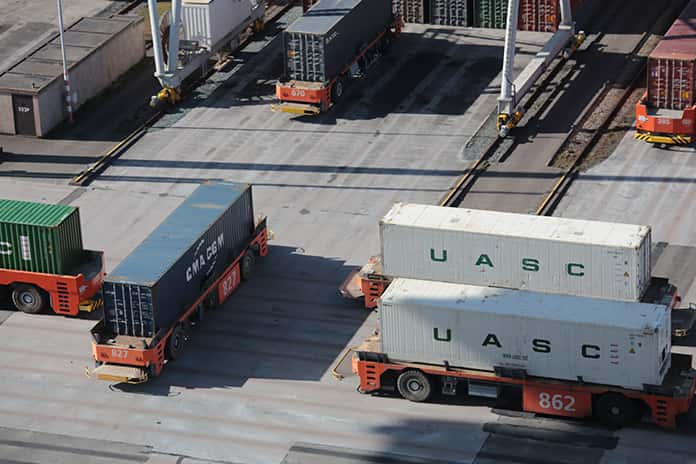From the management of stocks and raw materials to the organization of deliveries: warehouse transport, and logistics in each company must be followed with care, always trying to prevent inconveniences. Let’s see how IT tools can help us do this.
Inventory Management in the early 1920s
A valid reference model for companies until the beginning of 2020? Just in time goods procurement and extended supply chain, thanks to the ease of connections. The advantages? Keep inventory low and reap the benefits of agile manufacturing.
After a few months, the feasibility of such a scenario is severely tested by the developments of a world crisis, which has enormous consequences on the economy—for example, the blocking of production in large areas and heavy restrictions on circulation. In short, the general picture changes, especially in Italy, and forces several companies to rethink warehouse logistics and the entire supply chain.
At present (mid-March 2020), the logistics sector is not officially affected by the travel containment measures. Of course, however, many operators have informally begun to reduce trips and shipments, and in general, the situation has already had a notable impact.
Will we, therefore, move towards a new race in hoarding and stocks, and will companies return to the previous models of warehouse organization? It’s not for sure. The reduction of stocks and correct logistics management is still a valid aid to production, and technology can lend a hand.
Warehouse and Supply Chain Reorganization
An advanced warehouse management system, or rather, real-time control of needs and availability, improves incoming and outgoing goods. ERP type management software, and specific modules for the warehouse, such as Warehouse Management Systems, offer an updated continuous framework and allow you to regulate operations adequately.
Therefore, in a normal situation, this allows to minimize the storage of goods and, in some instances, even eliminate the warehouse. Many companies of the so-called Industry 4.0, adopting this lean approach, have obtained essential benefits in reducing fixed costs and operational speed.
What happens, however, when an unforeseen event or a crisis reduces or completely blocks supplies? This is the situation already experienced by some companies in the manufacturing sector at the end of winter 2020. This interruption of the distribution chain is an extreme example of an unfavourable contingency that should, in any case, be foreseen. We talked about it in a previous post about risk management in supply chain management.
A risk management plan then serves to find alternative resources, differentiate sources of supply, and consider the issue of stocks. Digital technologies offer a good help: business management software allows to obtain data and formulate reliable scenarios.
Logistics and Shipping
The preceding also applies to the other end of the supply chain, namely handling and shipping finished products. Whether you have your vehicle fleet or rely on external carriers instead, distribution logistics should follow the same precautions.
Therefore, a risk management plan is needed: to contain damage in situations independent of one’s actions, to maintain a quality standard of the services provided, to keep under control and optimize the handling paths of one’s goods.
Here too, digital comes to the rescue: logistics modules integrated into complex management software and standalone applications for tracking shipments—programs to obtain reliable data and sort shipments in the most appropriate way.
From Transport Document to Delivery: Solutions for efficient Logistics
Several steps must be followed, from product preparation to packaging, labelling and documentation, up to shipping and delivery to handle and transport goods. Each of these steps produces data and information to be received and transmitted, and their integrated management offers undoubted benefits.
Management programs give good results in optimizing logistics management, channelling information and offering a unified control panel to follow the various stages of the processes.
The software can, for example:
Speed up loading and unloading operations. The allocation of the products will be followed directly by software and will produce an organizational model of the warehouse such that the localization and recovery of the packages will be faster and more immediate;
Facilitate the transmission of label data directly to the packaging sector, speeding up the preparation of delivery notes and other necessary documentation for shipping;
Monitor the availability of the vehicles of the company fleet or of the carriers chosen for distribution, choosing the vehicles that are operational and the most appropriate in terms of size, type, and distance to be covered;
Track the status of deliveries and manage any problems encountered during the journey, using satellite tracking systems and remote contact forms.
As you can see from this shortlist, monitoring the distribution phase can be very effective for a company, optimizing costs and speeding up the entire time-to-market. Management systems of this type, on the other hand, are only a (proper) means of business management: to get the most out of them, you need managers who can use them properly.
The importance of Data Analysis also for Logistics
Even about the distribution of goods, it is necessary to have a risk management strategy to establish possible scenarios and response actions. It is not a question of making impromptu forecasts but exploiting the data available to assess the state of things, opportunities and unknowns dynamically.
Management of the company fleet or external carriers based on these assumptions can evaluate transport times, costs and opportunities with reliable data. A software module that allows a real-time analysis of these variables, for example, by comparing the prices and availability of the various couriers, does an excellent service to the company.
Therefore, data analysis proves to be an essential key to efficiency for the modern company, even when handling goods. The processing of the data received and transmitted at all levels of the distribution chain offers an updated and detailed picture of its possible developments. Even any hitches and distribution problems can therefore be better detected and addressed.


